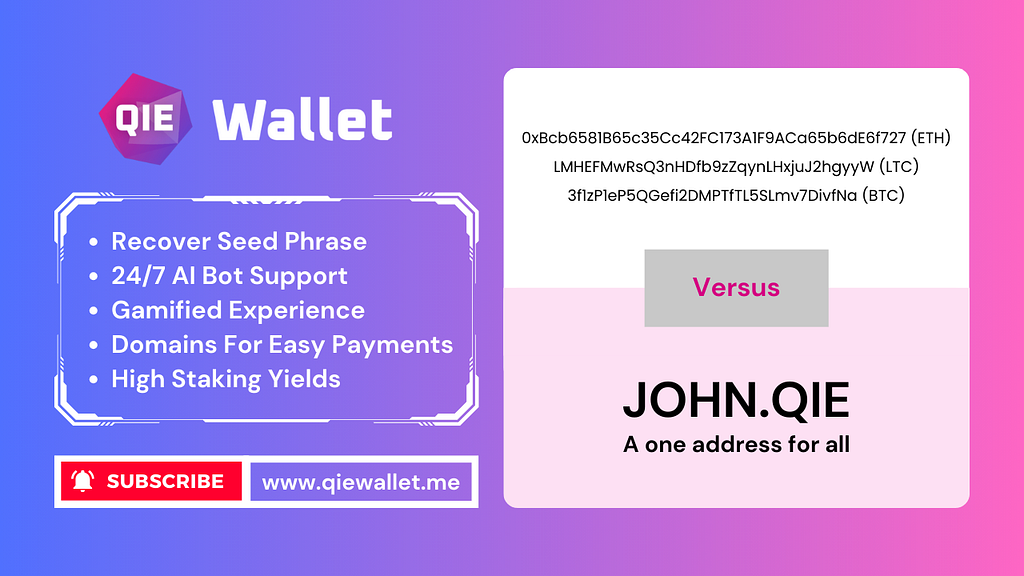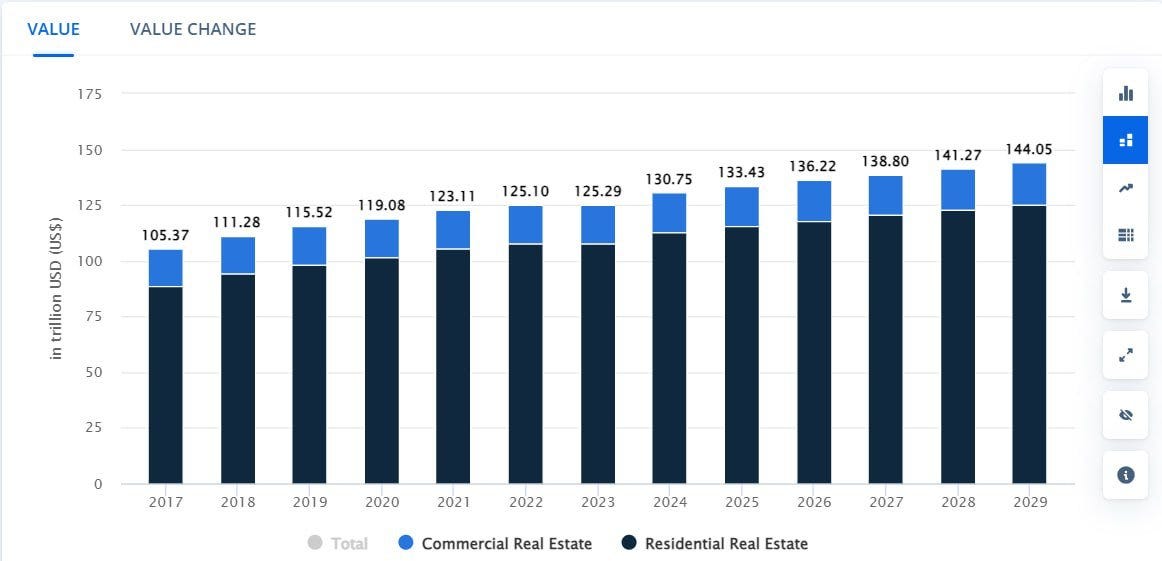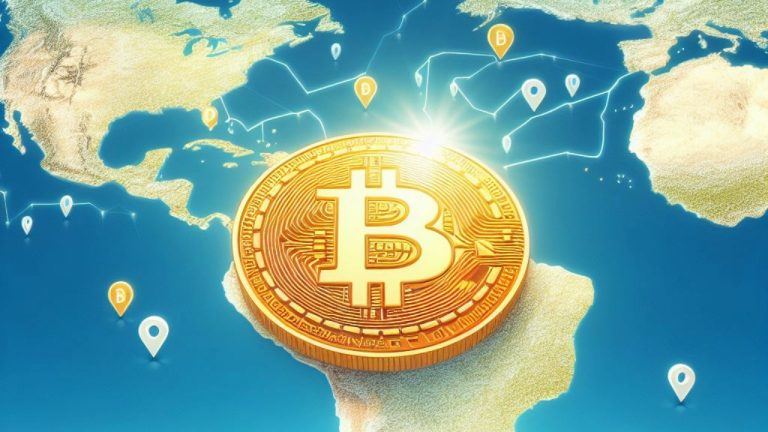The internet has come a long way since its inception, but over time, it has become centralized, with a few powerful companies dominating control over data, privacy, and financial systems. Web3 — often described as the next phase of the internet — promises to upend this model, creating a decentralized, user-centric internet where individuals control their digital identity, assets, and interactions. But why does Web3 truly matter? Beyond the buzzwords, how does it benefit users in practical, meaningful ways? Let’s dive into why Web3 is crucial for the future and explore real-world use cases that demonstrate its impact.

1. User Ownership of Data and Identity
One of the fundamental promises of Web3 is data ownership. In today’s Web2 world, tech giants like Google, Facebook, and Amazon profit from user data — selling it to advertisers, controlling access, and limiting user control. Web3 flips this model, giving users ownership of their data through decentralized identity (DID) and self-sovereign identities (SSI).
Use Case: Decentralized Social Media
Platforms like Mastodon and Lens Protocol allow users to control their identity and data. Instead of relying on a centralized server, your profile and content are owned by you, stored on decentralized networks, and transferable across platforms. This eliminates the risk of being de-platformed or losing access to your content, offering users freedom and control over their digital lives.
Practical Benefit:
Users have full control over their profiles, data, and content. They can share or monetize their data if they choose, and they are no longer at the mercy of centralized companies deciding what is allowed or restricted. It also means that user-generated data is not exploited for profit without consent.
2. Decentralized Finance (DeFi): Financial Inclusion and Control
Web3’s DeFi (Decentralized Finance) offers an alternative to traditional financial systems, which are often exclusionary, inefficient, and controlled by intermediaries like banks. DeFi allows users to access financial services — such as lending, borrowing, and trading — directly through decentralized protocols on the blockchain without needing a bank or intermediary.
Use Case: Global Remittances Without Middlemen
Sending money across borders is often slow and expensive due to high fees and limited access to banking systems. Using a DeFi protocol like Aave, Qidex, or Uniswap, users can send digital currencies across borders almost instantly and at a fraction of the cost. No bank fees, no delays, no middlemen. Furthermore, QIE Wallet enables the 2 Billion unbanked to access the ecosystem via mobile airtime onboarding, which is accessible from any kiosk or simple SMS.
Practical Benefit:
People, especially in regions with weak financial infrastructure or high remittance fees, can access banking services without the barriers of traditional systems. For those without a bank account or in underbanked areas, DeFi offers a way to save, invest, and transfer funds securely and affordably.
3. Elimination of Censorship and Centralized Control
In Web2, governments and corporations can easily censor content, throttle internet access, or control the flow of information. Web3’s decentralized architecture resists these actions, ensuring a more censorship-resistant internet.
Use Case: Censorship-Resistant News Platforms
In countries with restricted internet access, platforms like Mirror.xyz (a decentralized publishing platform) and IPFS (InterPlanetary File System) enable journalists to publish content without fear of takedowns. Content published on IPFS is hosted across multiple nodes, making it extremely difficult for any authority to censor or remove.
Practical Benefit:
Citizens in authoritarian regimes or areas with restricted internet access can communicate freely and access unbiased information. Content creators are no longer silenced by platforms or governments, giving everyone a fair opportunity to express opinions and share information.
4. Play-to-Earn and Ownership in Gaming
Web3 is transforming the gaming world through the play-to-earn model, allowing users to own in-game assets, earn rewards, and trade digital items in open marketplaces. In traditional gaming, in-game assets like skins or currencies are owned by the platform; users can’t sell or transfer them outside the game ecosystem.
Use Case: Play-to-Earn Games with Pawsome and QIE Doodle
Games like Pawsome and QIE Doodle are transforming the gaming landscape with the play-to-earn model, allowing players to own in-game assets as NFTs and earn cryptocurrency by completing tasks and challenges. Players can breed virtual pets or design doodles, then trade these NFTs on the open market, where their value is determined by demand. The digital pets or doodles can evolve over time, increasing their value.
Practical Benefit:
Users get to enjoy engaging gameplay while earning real-world value. These Web3 games allow players to convert their in-game efforts into income, transforming what was once just entertainment into a lucrative activity.
5. Digital Art and Creative Economy
For artists and creators, Web3 introduces NFTs (Non-Fungible Tokens), which revolutionize digital ownership by allowing creators to tokenize their work. Unlike in Web2, where digital art is often copied and shared without compensation, NFTs give artists a way to verify ownership, set terms for resale, and earn royalties each time their work is sold.
Use Case: Hovr NFT Marketplace
The Hovr NFT Marketplace is a decentralized platform that allows creators to mint and sell NFTs of their digital art, photography, and even music. By offering decentralized ownership, creators can ensure their work is traceable and verified on the blockchain. Hovr also enables artists to earn royalties each time their NFT is resold, ensuring they benefit from the growing value of their creations.
Practical Benefit:
Artists and creators now have a direct line to their audience and a sustainable income model. By selling their art as NFTs, they retain control, ensure authenticity, and capture value that previously went to third-party platforms or middlemen.
6. QIE Wallet: Decentralized Identity and Incentivized Ads
The QIE Wallet will introduce a revolutionary approach to how users interact with their digital identity and advertising soon. By using decentralized domains as an identity system, users can make seamless payments, interact with decentralized applications, and authenticate across various platforms. The key feature coming soon is the ability for users to watch ads and be incentivized — earning tokens or cryptocurrency for their attention — without compromising their data.
Use Case: Zero-Knowledge Proofs and Direct-to-Consumer Ads
QIE Wallet leverages zero-knowledge proof technology, allowing advertisers to target users without accessing or storing their private data. Users can opt-in to watch ads and get rewarded with QIE tokens or cryptocurrency, giving them a share of the advertising revenue. This direct ad-to-consumer approach ensures that users maintain their privacy while still benefiting financially from the ads they engage with.
Practical Benefit:
Users are no longer passive participants in the ad economy. Instead, they can own their data, choose the ads they see, and earn rewards for engaging with them. By using zero-knowledge proofs, the QIE Wallet guarantees privacy, ensuring that no third party exploits users’ personal data while still offering targeted ads. Since 30% of current clicks are fake, this will ensure marketing companies save more money to ensure actual views of their content.
7. Incentivizing User Participation
Web3 creates a token economy where users are incentivized to participate in ecosystems. Unlike Web2, where platforms collect user data for profit without rewarding users, Web3 platforms reward users for their contributions, interactions, and even for simply holding tokens.
Use Case: Browsing the Web and Earning Rewards
Brave Browser offers a prime example of how Web3 can reward users for engagement. Instead of being bombarded with ads, Brave users can choose to view ads and receive BAT (Basic Attention Tokens) as compensation.
These tokens can then be used to support content creators or exchanged for other cryptocurrencies.
Practical Benefit:
Users are no longer passive participants in the online economy. They earn rewards for their engagement and attention, gaining value from actions that traditionally benefited only the platforms.
The Growth Potential of Web3
The growth potential of Web3 is staggering, with experts projecting it to be a multi-trillion-dollar industry within the next decade. The transition from centralized to decentralized models opens up vast new markets in areas like decentralized finance (DeFi), play-to-earn gaming, NFTs, and decentralized identity systems. According to industry reports, the DeFi sector alone has already surpassed $100 billion in locked assets, while the NFT market has seen explosive growth, with individual artworks selling for millions. With the rapid expansion of blockchain technology, more users and industries are adopting Web3, unlocking opportunities for financial inclusion, user-owned data, and a decentralized internet. This shift is just the beginning — Web3 is poised to transform how we interact online, making it one of the most disruptive innovations of the century. For users and businesses alike, embracing Web3 now means getting ahead of a technological revolution with massive growth potential.
Conclusion: A User-Centric Internet Revolution
Web3 is more than just a technical evolution; it represents a paradigm shift in how the internet functions. By decentralizing control, Web3 empowers users to take charge of their data, finances, digital identity, and content. Practical use cases — from decentralized finance to play-to-earn gaming and NFTs — demonstrate its transformative potential in real-world scenarios. For users, this translates into tangible benefits: greater privacy, enhanced ownership, and financial inclusivity.
As Web3 continues to mature, it promises to reshape industries and empower individuals, giving them a stake in the digital ecosystem they help create. The future of the internet lies in Web3 — and for the first time, the internet will truly belong to its users.
www.qie.digital
Why Web3 Matters: Revolutionizing the Internet with Practical Benefits for Users was originally published in The Capital on Medium, where people are continuing the conversation by highlighting and responding to this story.

 9 hours ago
32
9 hours ago
32





 English (US) ·
English (US) ·